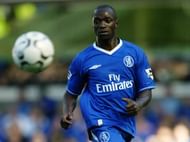Football as we know is always in a state of transition. The game has its own twists and turns, in a state of flux, moving in circles and its progression is marked by inventions every single game. The core values remain ingrained even if there are changes and they have ways of cropping up with new meaning. Those who fail to adapt and change find themselves on the sidelines while those who are ready to throw caution to the wind and modernize are successful as they are capable of unifying the past traits with the improved present ones.
Roles and playing styles which seemed unscathed have undergone change. However, in terms of tactical evolution, midfield and the roles of midfielders have undergone the biggest change since the turn of this century. For a team to be successful, all the three departments i.e. the defence, midfield and strikers need to be at their optimum best. But what is also true is the fact that a well oiled midfield able to control a game more often than not determines the final result.
The period till the 1950s witnessed an innovative and attacking midfield play primarily due to Herbert Chapman’s innovative 2-3-5 formation. The ‘70s and ‘80s saw the development of the defensive midfielder which is a core component in teams across the globe, albeit in an improved version 2.0. This time also saw some of the game’s greatest like Löthar Matthaus, David Platt et al as complete or box-to-box midfielders, ones who controlled the game defensively and who were able to create attacks.
The most attractive proposition in football back then and even now is the role of the playmaker. These are the players with their range of skills, passing, tactical intelligence, movement and composure that delight the crowds. Rivelino in the 1970’s, Michel Platini in the 1980’s, Rui Costa in the 1990’s and Zinedine Zidane in the late 90’s, early 2000’s are some of the geniuses to have changed the game as a playmaker.
As the midfield has become narrower, these roles have evolved and have become more specialized to counter different tactics deployed in modern day.
The Regista
Due to their wizardry, playmakers or the traditional “Number 10” are marked men even before the games have commenced. As the game has become more tactical and tighter with ferocious pressing, the emergence and the success of the Regista has been an antidote to the malaise of changing tactics.
Registas, much like the music conductor, orchestrate the midfield. It’s their ability to initiate attacking play from a deep-lying position while being available all over the pitch to execute further attacks, which makes them so dangerous. The increasing desire to use a regista in the modern day game is the obsession of managers to control possession and dictate the pace of games.
From a tactical viewpoint, the regista is the organizational genius, providing defensive cover with a vision to initiate attacks at will. Some of the greatest registas the game has seen over the past few years have been Xavi, Xabi Alonso, Ricardo Montolivo, Hernanes, Marco Verratti to name a few.
However, no one epitomizes the role of a regista more than the L'Architetto Andre Pirlo. The biggest asset of his game remains his vision and the understanding of the game. The metamorphosis of Andrea Pirlo into a regista should be credited to Carlo Ancelloti, who always believed, “He is one of the few players that you need to say little or nothing to, he understands everything by himself. For me, he is the strongest central midfielder in the world.”
The Makelele role
Very rarely, footballers are given the privilege of having footballing terms named after them. Johan Cruyff was one who had the enigmatic ‘ Cruyff Turn’ named after him. The other person who holds this privilege is Claude Makelele for his 'Makelele role’, which transformed the defensive midfield role in this century.
An anti-footballer in many coaches’ books; Makelele played the role to perfection, breaking up attacks and holding the shape of the team together. It was his simplicity, efficiency, positional sense and discipline that separated him from the other contemporary defensive midfielders.
He was regarded as the best player by other greater Galacticos at Real Madrid, due to his calm and disciplined influence on the pitch. A neutral’s delight when attacking, it was when Madrid lost possession that Makelele proved his pedigree of being one of the best defensive midfielders. He would break up play, make the tackles and regain possession without any help from any of his midfield peers.
It was, however, the Special One’s 4-3-3 formation at Chelsea, where Makelele was at his optimum best. As he rightly summed up, “The four at the back and the one in front of them – me – would concentrate only on defence and let the others go and do what they had to up front. They would take the risks, I would take care of the opposition’s attacks.”
Sergio Busquets is the improvised, modern day version of the Frenchman with the ability to hit the long ball as well as make the quick (at times one-touch) passes.
The Double Pivot
At the start of the century, coaches had to address two big problems; plug the space between midfield and defence, and get the creative players on the ball. Rafa Benitez revolutionized the 4-2-3-1 in the 2000s which became prevalent across Europe where managers wanted control in the centre of midfield.

The organized and solid 4-2-3-1 gave coaches an opportunity to play a compact game as well as hurt opponents with patient buildup play or rapid counter-attacks. The 2 midfielders had specific roles: ‘the destroyer and the creator’. Perhaps the perfect amalgamation of these two schools of tactics was the pair of Javier Mascherano and Xabi Alonso at Liverpool.
Mascherano’s role was all about making the tackles, plugging any hole between midfield and defence as well as regaining possession whenever it was lost. More importantly, Mascherano had to distribute the ball to Alonso whose main role was to rotate the ball, making the long passes to the flanks or switching play, much like the role of regista.
Milan’s success under Ancelloti was also built under this philosophy which saw the pairing of Gennaro Gatusso and Pirlo. Pirlo’s success can also be attributed to the dirty work that Gatusso did in the role of the destroyer.
Double Pivot version 2.0
Much like the traditional double pivot, the newer version of the double pivot relies on the ability of rotation between the two central players. Unlike the older version, where there is a clearly defined role, this evolution of this version can be attributed to the likes of Bayern Munich and Borussia Dortmund. The combination of Bastian Schweinsteiger and Javi Martinez for Munich, Gundogan/Bender for Dortmund or Khedira/ Schweinsteiger for Germany are prime examples.
Perhaps the biggest exponents were Martinez and Schweinsteiger during Bayern Munich’s treble-winning year in 2013. Both are defensively sound, have the ability to dribble, make runs into the opposition penalty area as well as clear any danger in their own penalty area. These attributes are combined with pace and power making it difficult to overpower them technically and physically.
A rotating double pivot enables both players to fulfill the attacking role as the situation demands. If either one is marked the other rotates with him. Both of these players are disciplined and hold the line and support the defense when needed and also attack making ghost runs to support an attack.
The Complete Midfielder
Just when the footballing world thought that the box-to-box midfielder was a dying role, it saw a re-entry at the turn of 2000’s. As the game became narrower, this role started diminishing. The likes of Steven Gerrard, Paul Scholes, Cesc Fabregas and Frank Lampard revived the dying role in the Premier League. Yaya Toure is perhaps one of the best modern box-to-box midfielders due to his physical, technical and tactical ability.
In Italy, it is the Chilean “Il Guerriero” (The Warrior) Arturo Vidal who is proving his talent as a complete midfielder. A tireless midfielder, Vidal along with Marchisio supports Pirlo defensively as well in attack.
These midfielders are strong, creative in attack and also defensively sound – attributes that are needed to excel as a box-to-box player. Schweinsteiger can also be labeled as a complete midfielder as he has adapted his game from a right side midfielder to a box-to-box one with his ability to advance into the penalty box and also find pockets of spaces to thread the killer passes or shoot on goal. More importantly he has the awareness to race back and break up play whenever possession is lost.
Conclusion
Barcelona, Real Madrid, Bayern Munich, Chelsea or Juventus are teams separated by countries but what ties them together is their ability to adapt to any one of the midfield systems that can yield success. As football has progressed, some of the old roles have just been reignited with a new flavour to it. In a fast and constantly changing world, it remains a fact that if tactics are not innovated, invented or re-invented, a coach or club would most probably end up perishing.
As Matthew Broderick stated in Ferris Bueller's Day Off, “Life moves pretty fast. If you don’t stop and look around once in a while, you could miss it.”




